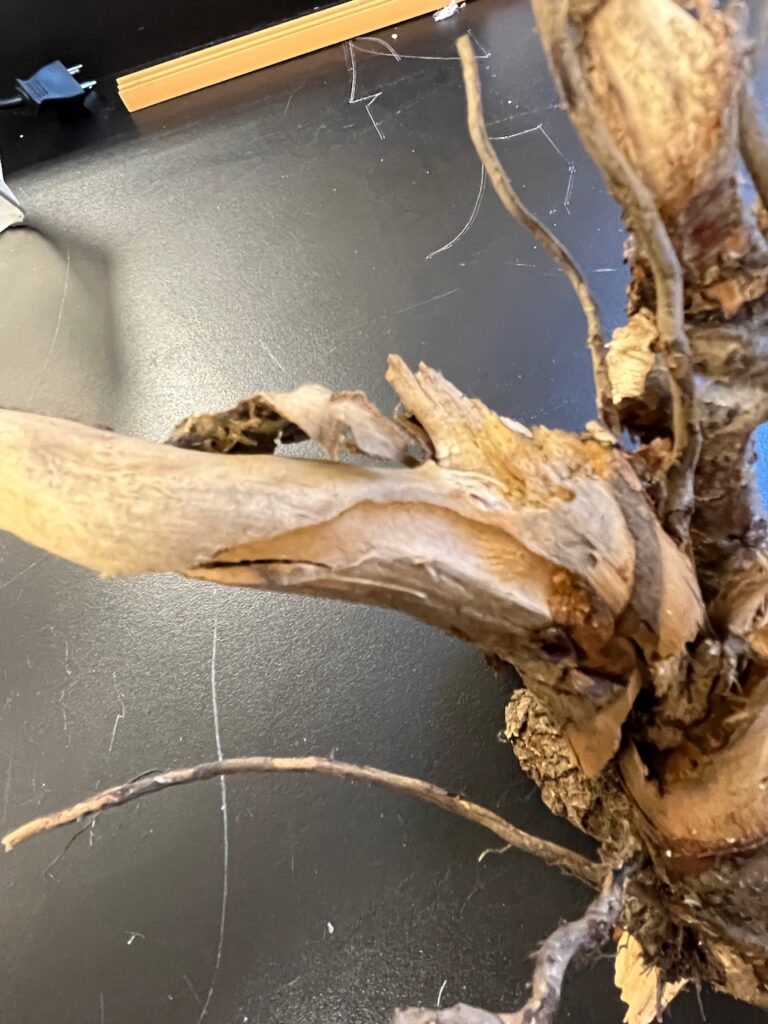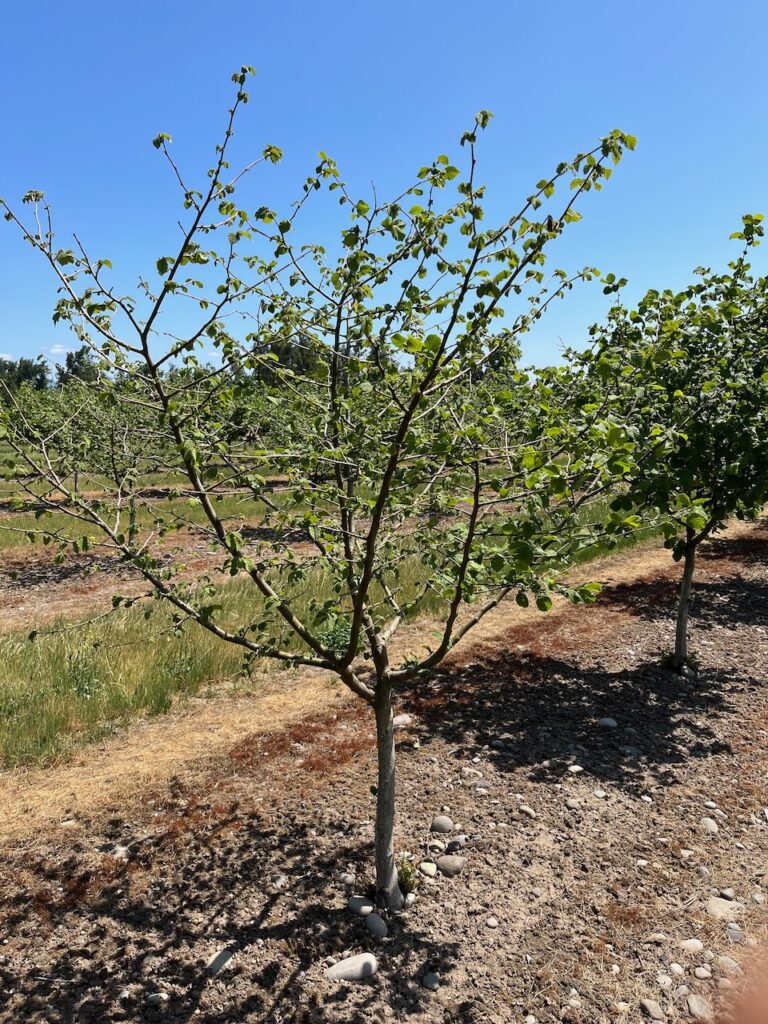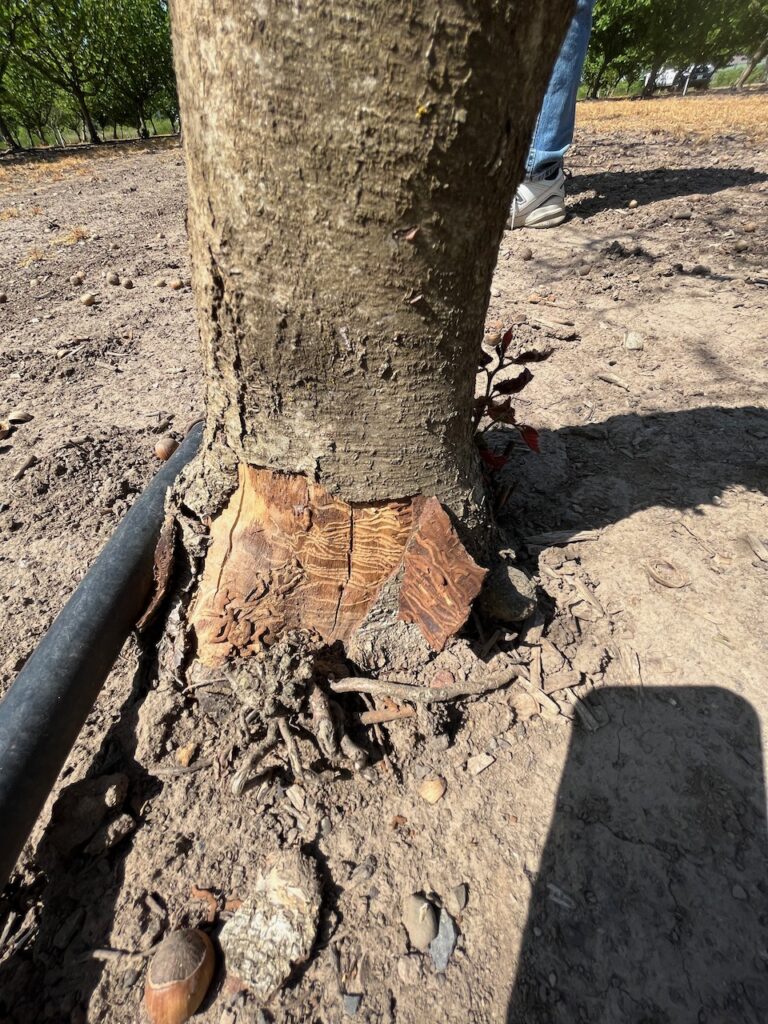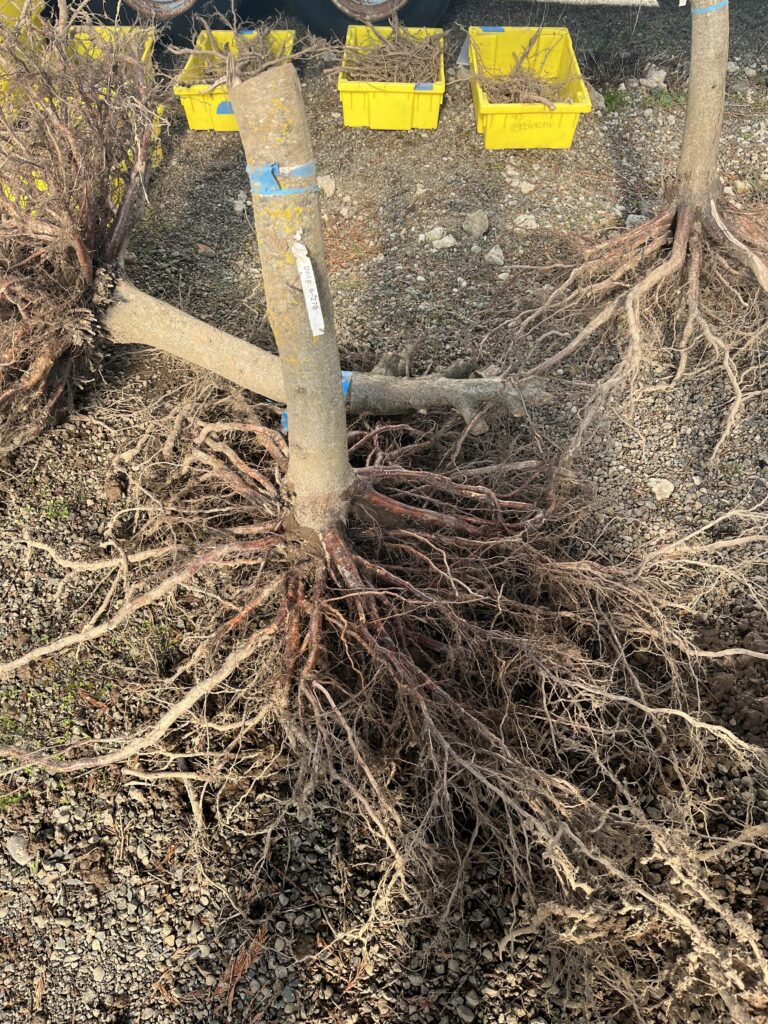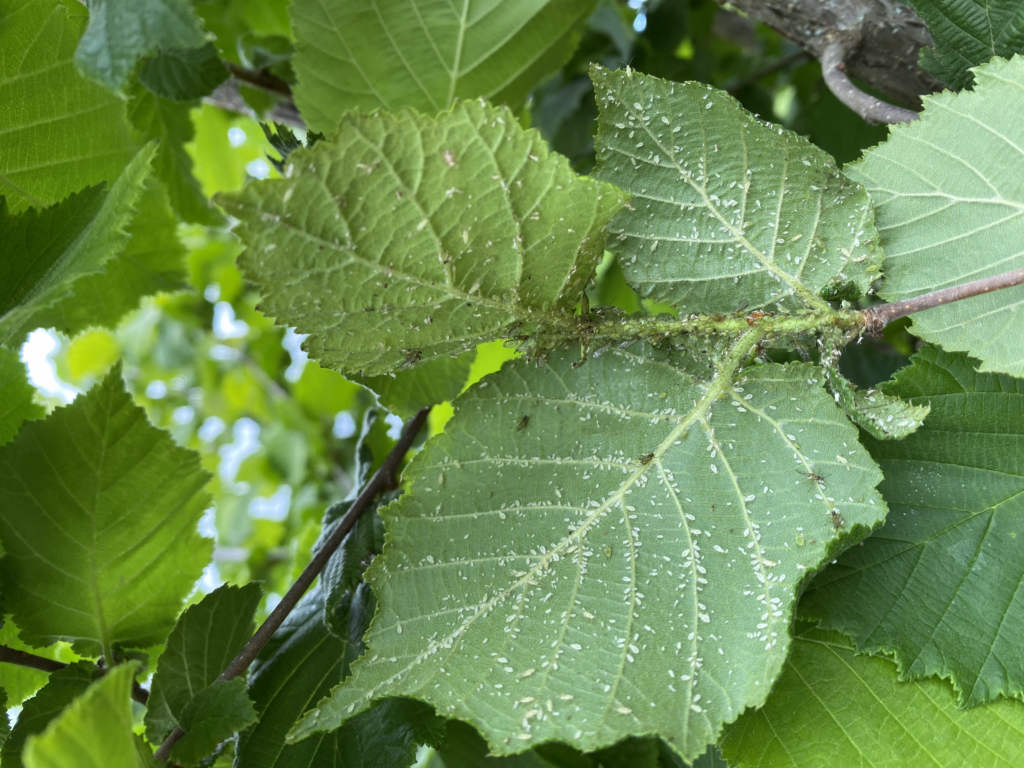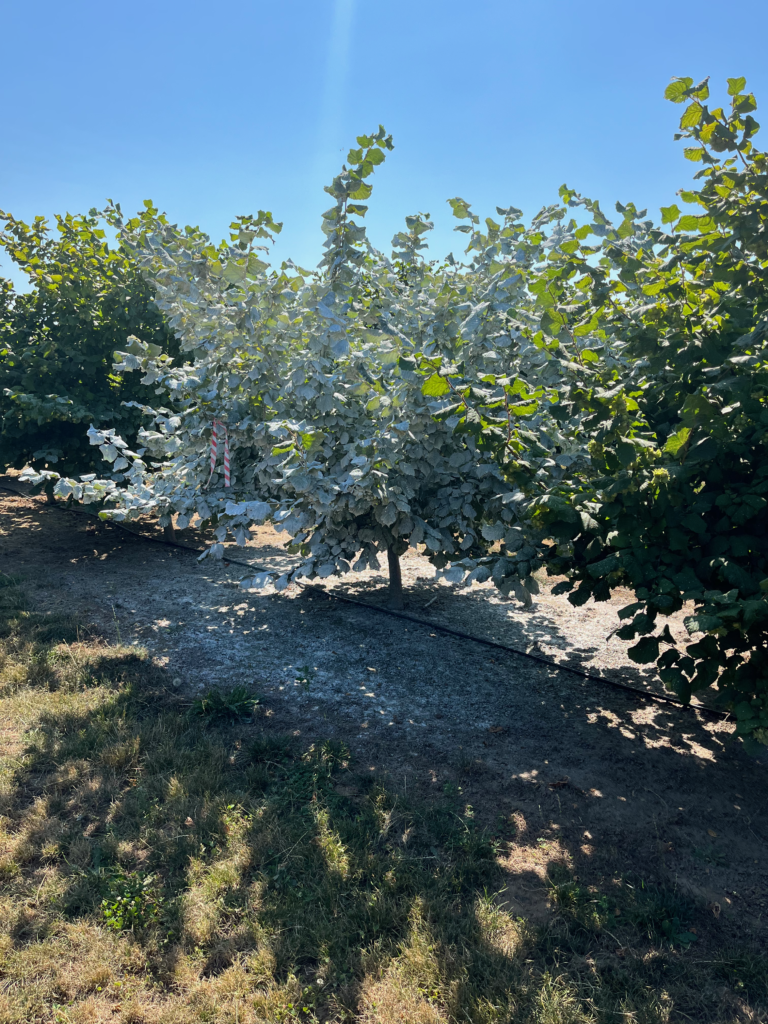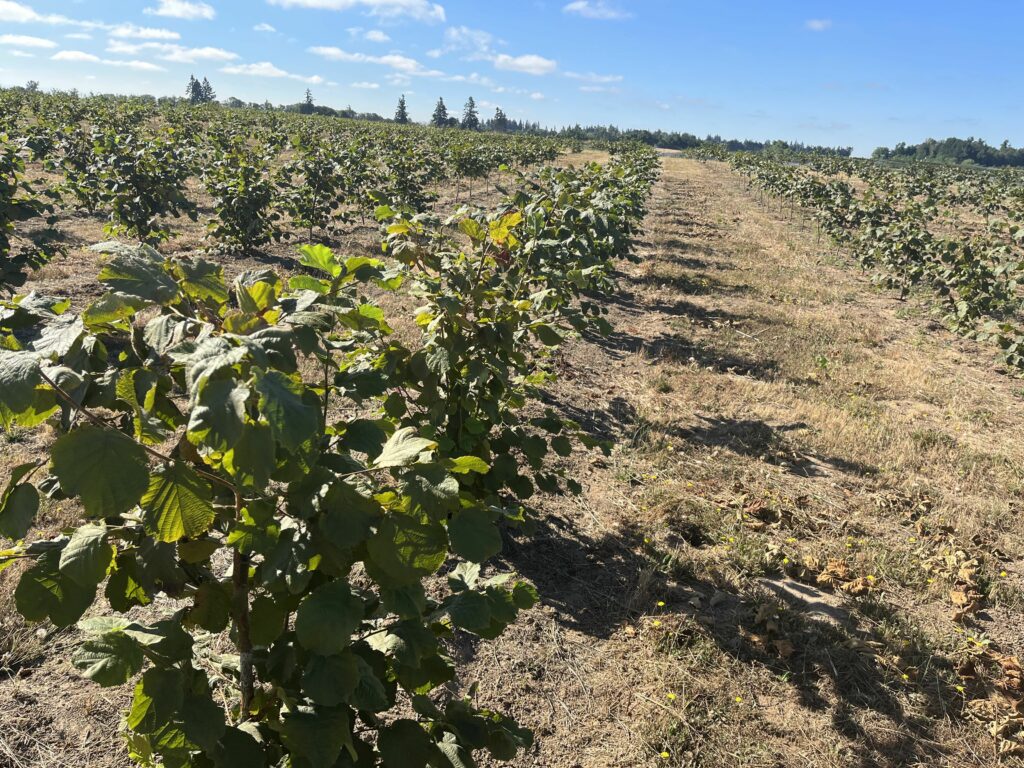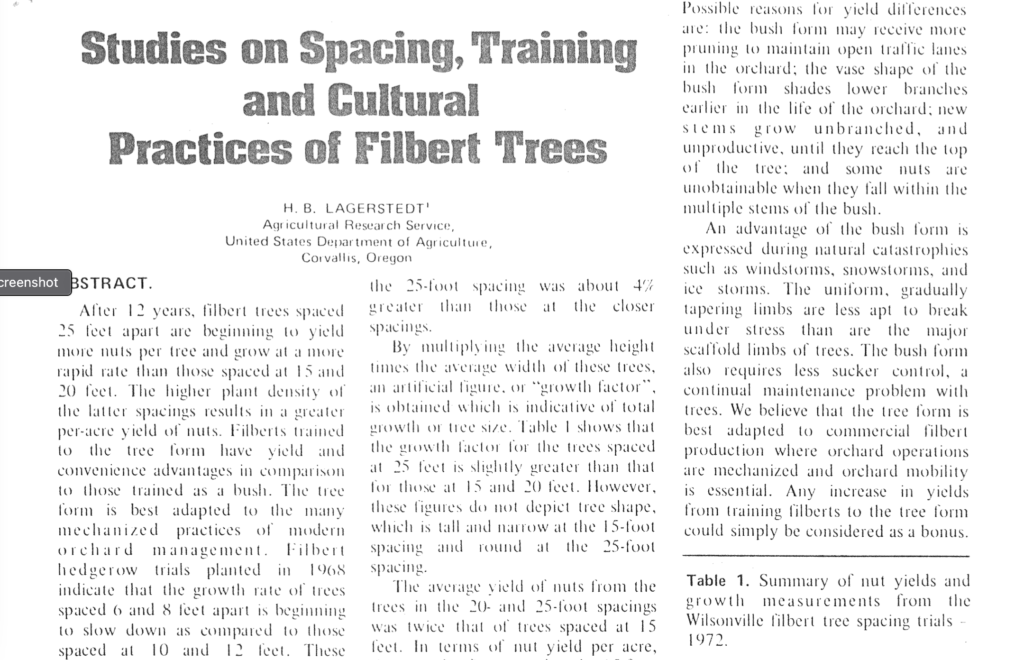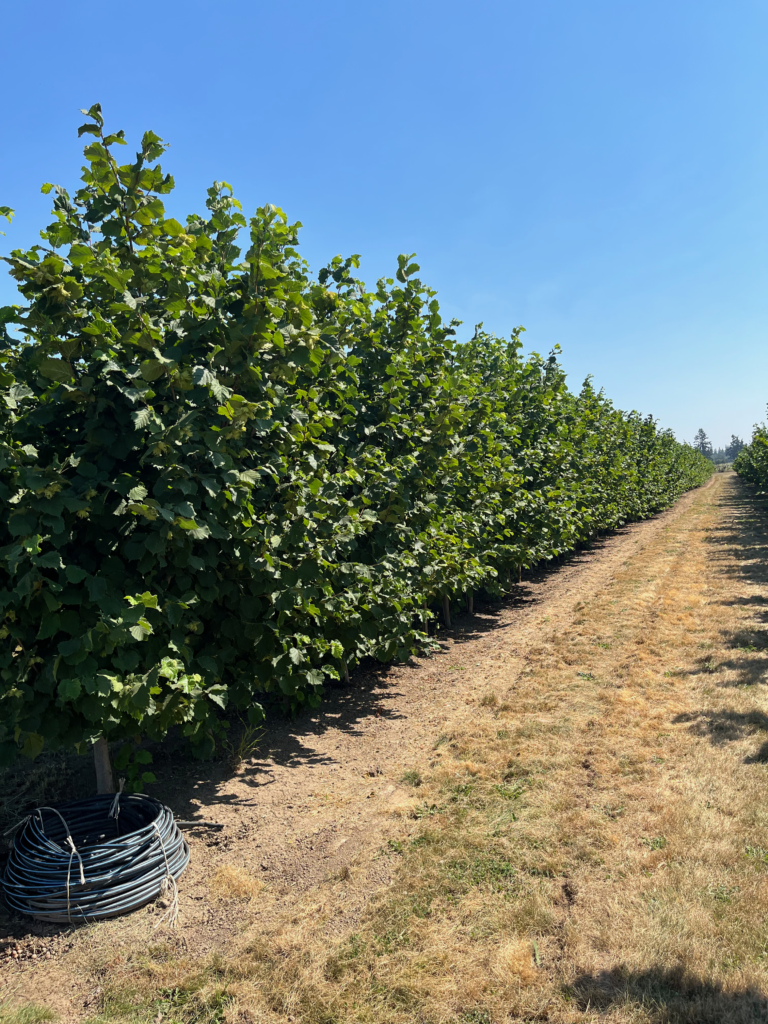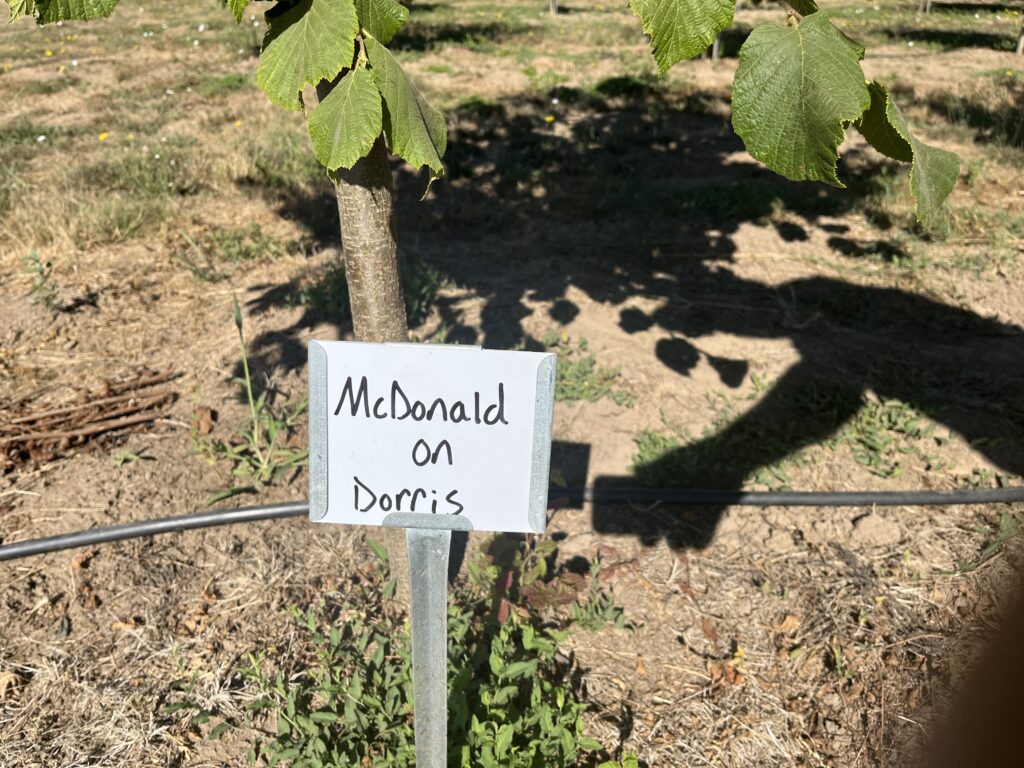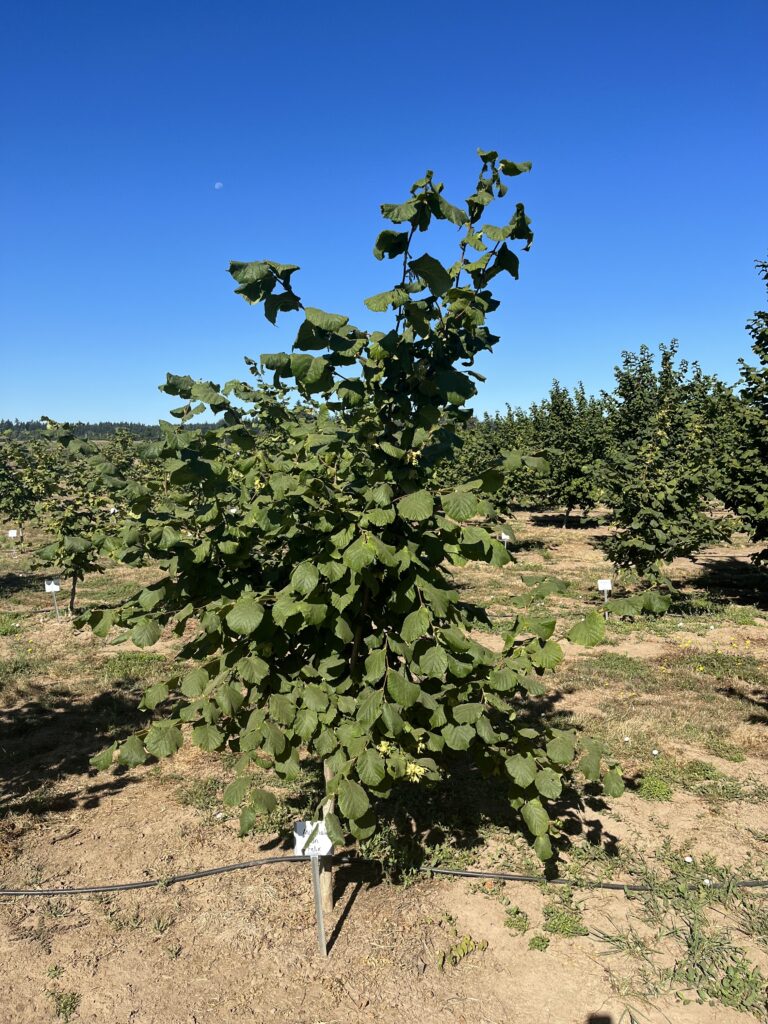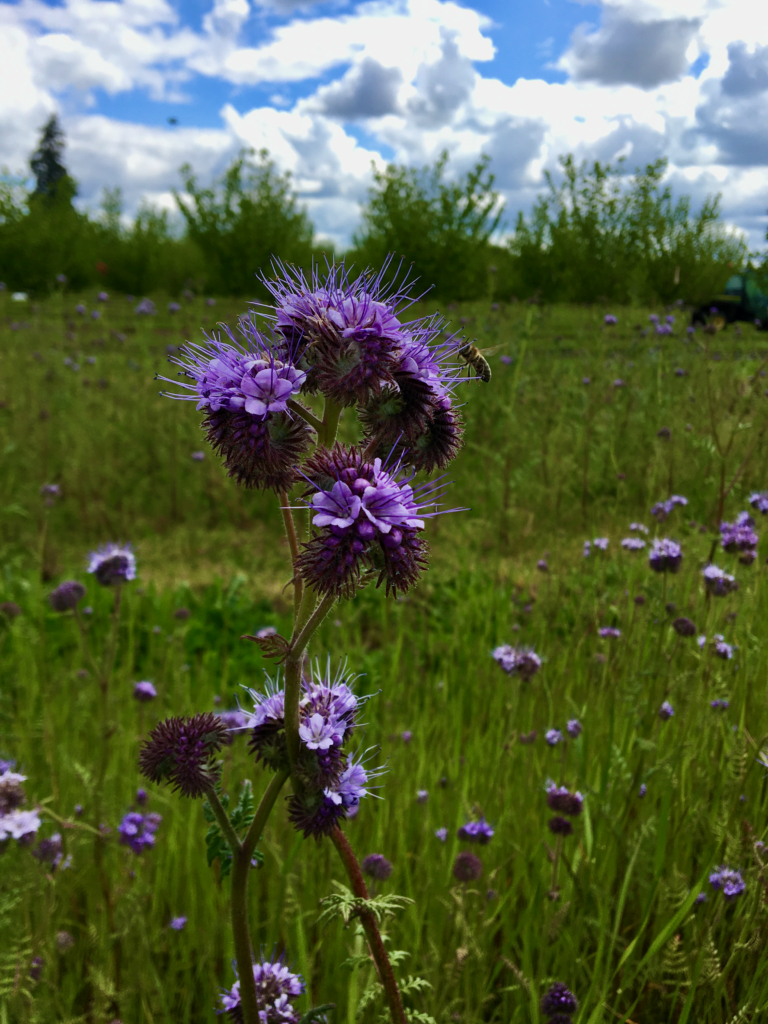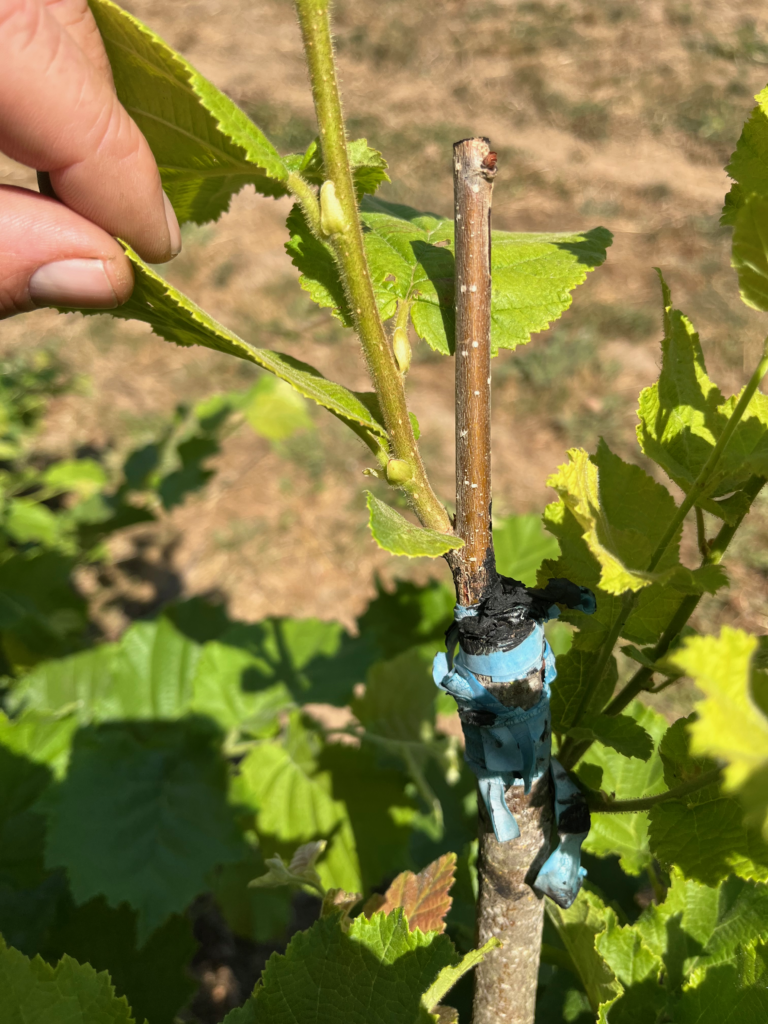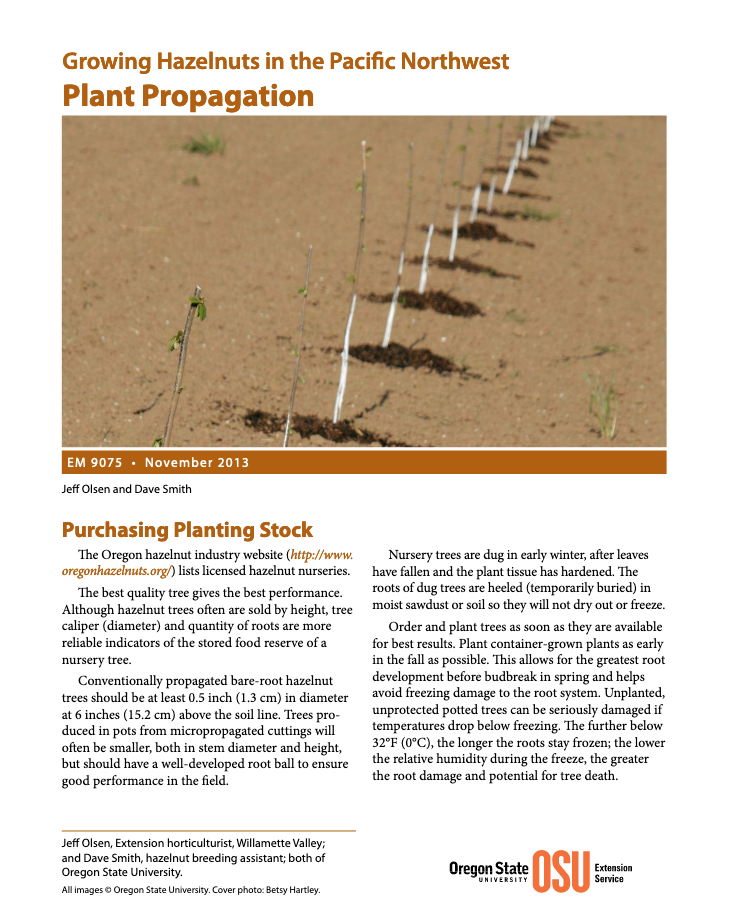Hazelnut growers across the Willamette Valley have been seeing a trend with trees that are slow to develop their canopies this spring and there is an abundance of dead, twiggy wood and buds that failed to develop normally. Overall, this gives the canopy a thin, weak appearance, and the trees look unhealthy. The symptoms were most apparent in ‘Jefferson’ of intermediate age bearing age, although symptoms could also be found in ‘Yamhill’, ‘McDonald’ and other varieties. But, after looking at a number of these I think it safe to say Jefferson looks the roughest.
We see some of this each year, but typically not at this level, and not so widespread. Many growers have been alarmed at the severity and are concerned about disease. The OSU Plant Clinic has been very busy with hazelnut submissions with these symptoms. In most cases, the diagnosis is the same: abiotic causes.
I think it is clear these symptoms are caused by stress, particularly drought stress worsened by heavy crop loads and potentially by some cold temperatures this winter. Here’s the evidence. Last year was very dry. in fact of the last 8 years, only 2021 had more evapotranspiration (ET) than 2023 (see figure below). You will recall 2021 was the season we had the killer heat dome event at the end of June. ET is a measure of water loss from the soil and from plants and our goal with irrigation is to replace this water loss.

In our research orchard blocks at the North Willamette Research and Extension Center in Aurora, OR we have trees that get irrigated to a range of percentages of evapotranspiration. When I went out to look at the condition of the tree canopies across a range of treatments, it was clear that dryland trees had the most apparent drought stress symptoms this spring. The well-watered trees looked much better than dryland trees.
This can be proven through quantification of leaf area. One method of quantifying tree canopies is through image analysis. I used ImageJ, an open-source image analysis program for the examples below.




A couple of other factors may be coming into play with Jefferson. Our research indicates that Jefferson may have more of a yield response to irrigation compared to other varieties. That will be a post unto itself, but I think one of the reasons for this is because this variety is not only highly productive, it is also late. Nuts mature late in the season when drought stress is more intensive. There may be physiological reasons as well. The good news is that trees can grow out of these stressed conditions, and the spring has been kind to us with cool temperatures and rain events, and canopies are starting to look much better than they did. Regardless, the reality is that yields will likely be reduced on some of the orchards with severe symptoms.
Severity of recent drought stress symptoms can be worsened by other issues affecting vascular water flow. This includes root problems from Prionus and other root borers, root pathogens, or simply poorly rooted trees. It also includes trunk problems such as fungal or bacterial cankers, included bark/poor structure, and trunk borers. These are issues to look for if trees are not recovering.




